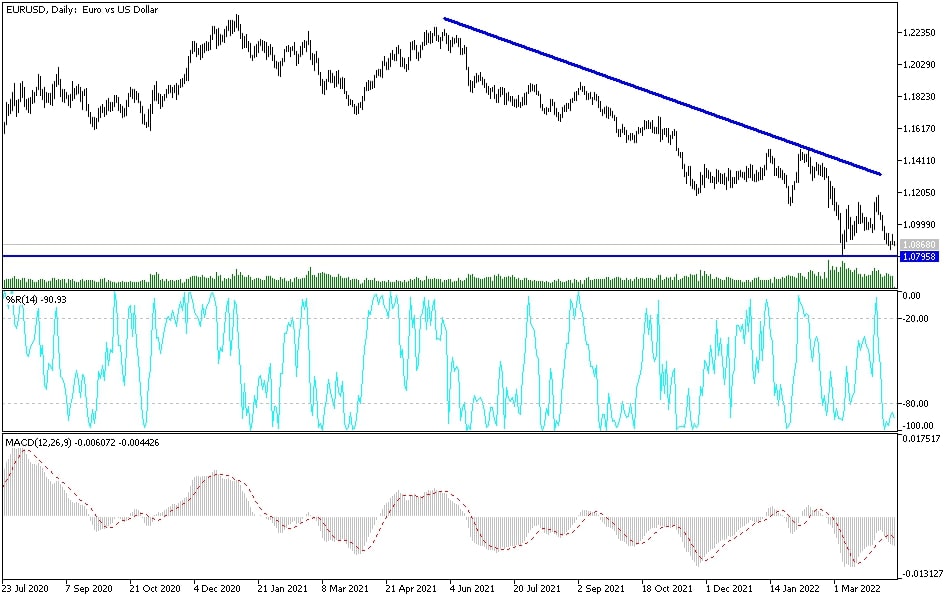The EUR/USD exchange rate entered the new week's trading near its lowest levels in several years, stable around the 1.0880 support level closest to the most important bear target 1.0800. The French political developments and the European Central Bank (ECB) policy could provide partial compensation during the next few days. The outlook for Fed policy is likely to become increasingly onerous. Overall, the euro has been one of the biggest declines for currencies since early last week when market concern about the sanction’s response to allegations of Russian atrocities in Ukraine weighed significantly on continental currencies.
This comes after opinion polls were released after the vote in the first round of the French presidential election that appears to give a clear lead for the incumbent position ahead of the second round of April 24. It is in anticipation of a possible supportive political decision on Thursday from the European Central Bank.
Uncertainty over the outcome of the French election on April 24 was widely cited as a risk to the EUR last week to the extent that it dragged the currency's performance down. There may be some respite over the coming days. Relief may be more likely regarding the likes of the Swiss franc as a safe haven compared to the US dollar, however, given that this Tuesday will release US inflation data for March, the US Federal Reserve is increasingly poised to respond to mounting price pressures. by raising interest rates.
Commenting on the outlook for the EUR/USD, Joseph Caporso, Head of International Economics at the Commonwealth Bank of Australia said, “We expect the EUR/USD to consolidate following last week's weakness. The mid-March low of 1.0806 is likely to be tested in the coming weeks. The low point pandemic at 1.0688 is within reach as well.” "The European Central Bank is in a difficult position because higher energy prices reduce disposable income and economic growth," the analyst added. This is in contrast to the FOMC, where the task of tackling extremely high inflation is the main focus on the backdrop of a strong economy and a tight labor market.”
Like many other exchange rates facing the US, the EUR/USD rate has come under increasing pressure in recent weeks as the Federal Reserve has made it increasingly clear that US policy makers can move faster than even financial markets are willing to extend credit. This scenario may become more likely on Tuesday if US inflation pressures turn out to have increased last month, which is likely to limit any recovery in the EUR/USD pair ahead of Thursday's European Central Bank monetary policy decision.
According to the technical analysis of the pair: There is no change in my technical view for the future price of the EUR/USD currency pair. The general trend is still bearish, and the ideal bear target is 1.0800, which is the closest currently. This may expose the EUR/USD to more bearish momentum, and therefore moving towards deeper support levels may be the target. On the other hand, the Eurodollar gains are still a target for sale as the Euro is still directly and continuously exposed to the Russian/Ukrainian war. According to the performance on the daily chart, the break of the resistance 1.12 will give an opportunity to break the current descending channel.
The euro is awaiting the announcement of the German ZEW reading, and the US dollar is awaiting the announcement of the US inflation numbers.

